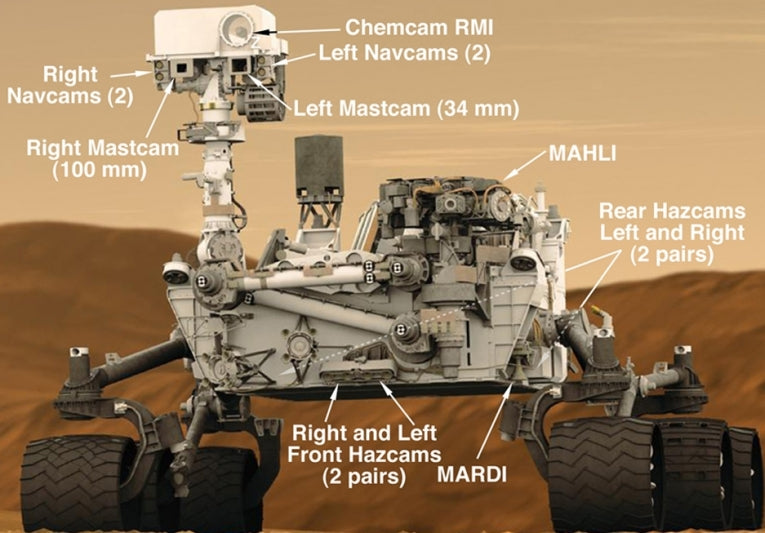At 15:00 hrs, Mars time, the NASA rover, Curiosity, programmed to survey the red planet, has no time left. Its half-metre wheels are tucked away ready to spring into action now it has achieved TOUCHDOWN!
With only a parachute initially, then the sky crane, to help slow the descent, at 0631 BST, Curiosity landed on Mars. The checks on possible malfunctions will be legion, the possible faults may or may not be ironed out and off Curiosity goes on its Martian journeys. Meanwhile, at lunchtime on Monday (today), the first pictures from the intrepid rover will arrive on earth, after a lengthy transmission from Gale Crater.
EDL (entry, descent and landing) using the famous crane, is one of the most nerve-wracking moments in space history, comparable almost with the Moon landing. Robots being the future for a lot of space activity, this one ton, half a billion dollar vehicle could tell us things no human would.

Curiosity touchdown celebrations by NASA technicians at the Mars Science Laboratory (MSL) in the MSL Mission Support Area; Credit: © NASA/Bill Ingalls
Evolving the complex system for sampling rock began with the two previous rovers, and Curiosity now compares with the best available mineralogy apparatus. Simple and effective, it still delivers detailed data that the mission seeks on suitability for past and present life.
When the "sky-crane" lowered that precious cargo from its capsule onto the Martian surface - ever so gently - it will have decreased the velocity of the vehicle (after an incredible space/orbital speeds of over 13,000mph) to 202mph and then hopefully to zero (named the 7 minutes of terror).
The parachute had already managed the huge reduction in speed from the orbital velocity. To see exactly how it was managed, you can watch an via exciting simulation.
Sulphates and clay are target minerals in the layers of rocks being sought out by The array of Curiosity's instruments will be focussed on investigating alluvial fans around a crater north west of the landing area.. A series of undulating lines travelling southeast from the crater indicates more alluvial material moving down a slope. What traces of past water or carbon for life will Curiosity find? NASA's scientists via explain it in this video.
The first low resolution images from Curiosity have arrived, we hope to post some high resolution images as they arrive later in the day.

One of the first pictures from NASA's Curiosity rover, which has just landed on Mars. It was taken through a low resolution "fisheye" wide-angle lens on one of the rover's Hazard-Avoidance cameras (Hazcams - See Top Image). Image credit: NASA/JPL-Caltech










